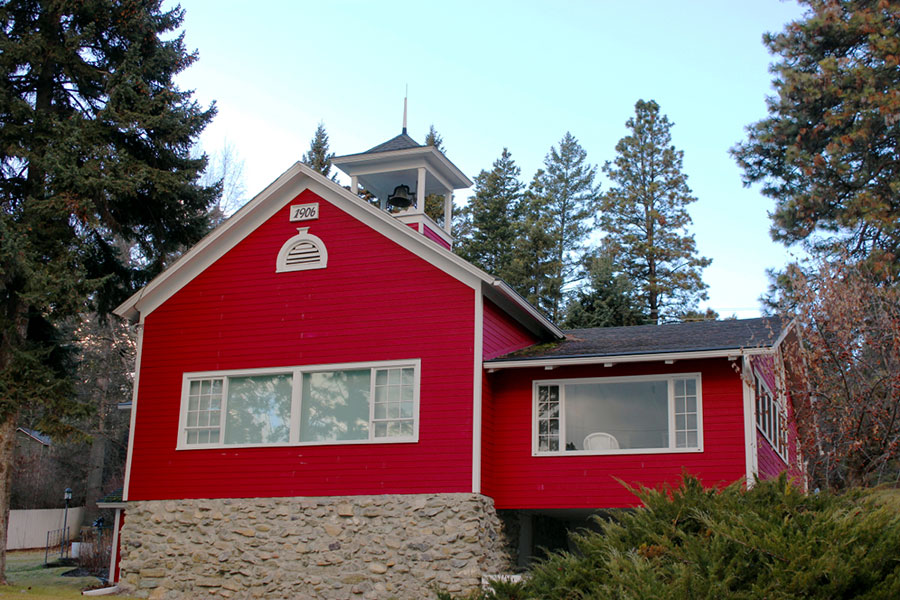Lakeside seems to hide its history well. Like many other Montana towns, Lakeside seemed to just “happen.” It has no historic “downtown” to boast, no bygone railroad station, and no monumental relics of forlorn industry. But it gradually became more than a good fishing spot where two creeks met Flathead Lake, and more than just a place of rest for those weary from traversing the all-but-darned Angel Hill.
But despite its efforts to conceal the past, Lakeside fortunately retains a landmark that so many other towns have lost: its original schoolhouse.
The “Lakeside schoolhouse” was built in 1906 – before “Lakeside” was even known as Lakeside. For many, it was “Stoner,” while some still called it “Chautauqua” – referring to the popular education-movement assemblies held in the area in the 1890s and early 1900s.
The schoolhouse was originally much smaller and oriented differently than it stands today. Yet some of its original charm and features remain intact. For example, the “new” maple hardwood floor installed in March 1930 has been restored and remains underfoot today – and serves perhaps as a metaphor for Lakeside and the community.
The original floor had been worn down for the better of two decades by children who came to learn, when not tending to chores about the family farm or homestead. Having a new floor was a matter of community pride and many folks pitched in to replace the original (more primitive) one.
Volunteers donated their time and effort in hauling the wood for the floor and finishing it with oil. And funds to buy the floor came from community dances, which were held at the schoolhouse after school. Volunteering, pitching in, helping out – these are part of the community spirit which still pervades Lakeside (the home of Volunteer Park).
Of course, the schoolhouse is more than a metaphor, floor, frame, and walls: it was an important place in the community. After hours (when schoolwork became homework), the schoolhouse became a place for dances, card parties and wedding receptions. The Lakeside Townsend Club, the Lakeside Ladies Club, and other civic groups gathered at the schoolhouse from its early years until the 1960s.
The schoolhouse was also the place where the Lakeside Methodist congregation met for 35 years, from 1915 through 1950 (until the Methodist church was built on part of the old Woodward estate at the corner of U.S. Highway 93 and Adams Street).
And many residents along the “West Lake Shore” voted at the schoolhouse, most likely after some lively election-day banter and political discussion at the schoolhouse doorstep.
Indeed, the schoolhouse is a place where important matters were decided, fond memories were made, and many lessons learned.
The Lakeside schoolhouse also served as a landmark in the most literal sense. It was a way-marker along the west shore during an era when directions to and fro often included “near the schoolhouse,” “just south of the schoolhouse” or “up the creek from the schoolhouse.”
More recently, some long-time residents may recall the “Red School House” shop and dining room kept by the beloved and most etiquette-minded Mrs. Barry for many years. Incidentally, her son Michael and his girlfriend Lee dePaolo recently and most painstakingly restored and renovated the schoolhouse (which is now a private residence).
And while Lakeside may not boast an obvious past, if you look carefully along the shore or peer quickly along the highway, you can catch a glimpse of the schoolhouse bell tower – an icon of historic preservation and a landmark of Lakeside history.
Jaix Chaix is a columnist and author of Flathead Valley Landmarks and other local history books that are available for sale at the Flathead Beacon at 17 Main St. in Kalispell.
